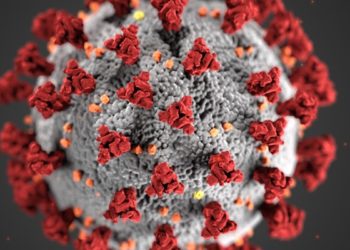The Scan by 2 Minute Medicine®: Wegovy: A Magic Bullet? Contending with Congenital Heart Disease, COVID-19 Developments, and Silently Spiked Straws
9-5-2023
The Scan by 2 Minute Medicine® is a pop-culture medical newsletter and exclusive benefit for 2 Minute Medicine Plus subscribers.
Wegovy: A Magic Bullet?
The Story: Semaglutide, also known as Wegovy or Ozempic, has been taking the world by storm, and recent results suggest this may be for a good reason. This study showed that in addition to its use in managing diabetes and obesity, it may also be useful in managing heart failure.
What is Heart Failure?
As the name suggests, heart failure is a condition where the function of the heart is compromised. While this sounds like imminent danger, 6.2 million Americans live with heart failure, because there are stages of heart failure depending on how much function of the heart is lost. Symptoms of heart failure include progressive shortness of breath, wheezing, swelling in the extremities, and coughing. Niels Bohr, who contributed immensely to physics and to the field of science, lived with heart failure, as well as many other celebrity names including Elizabeth Taylor, and Andre the Giant, showing just how common this disease really is.
Where does Wegovy fit in?
In addition to being a treatment for diabetes and obesity, Wegovy, the brand name of semaglutide, seems to have profound effects on the cardiovascular system. The latest data evaluated the use of Wegovy in individuals with obesity and heart failure and observed a significant improvement in symptoms of heart failure after a year of treatment. Despite this, semaglutide was conspicuously absent from President Biden’s recent list of ten medications subject to price negotiation. Currently there are investigations surrounding the potential for Ozempic to increase the risk of suicidal thoughts, though not more evidence is needed. With the latest data around Wegovy’s cardiac benefits, perhaps it will become an effective therapy for heart failure and other heart conditions. In the meantime, in addition to keeping a healthy weight, the CDC recommends eating fruits and vegetables and staying physically active to prevent heart failure.
Contending with Congenital Heart Disease:
Just weeks ago, LeBron James Jr., affectionately referred to as Bronny suffered a cardiac arrest on the basketball court. The son of LA Lakers legend LeBron James, had many people worried about his return to basketball, but he is expected to resume his training shortly. Bronny’s incident comes in the wake of Damar Hamlin’s on-field cardiac arrest and reminds the world that even athletes in peak physical condition may experience medical emergencies. It was revealed that Bronny’s incident was in part due to a congenital heart defect, a defect affecting the structure and function of the heart. Individuals are born with congenital heart defects, but these may be mild or severe in nature. While the exact cause of these defects is not known, there are surgeries to repair these defects in severe cases. If left untreated, congenital heart defects can lead to complications, such as arrhythmia, infections, and heart failure.
Though it seems daunting, many athletes have had success despite congenital heart defects. Arnold Schwarzenegger was born with aortic stenosis, a condition where one of his heart valves was abnormally stiff. This condition can lead to high blood pressure, and ultimately heart failure. Despite the incredible exercise routine of the former Mr. Olympia, his aortic stenosis did not pose problems until much later in his life, when he required multiple surgeries to replace this valve. 3-time Olympic gold medallist, Shaun White, also suffered from a congenital heart defect, known as Tetralogy of Fallot. This defect often results in severely impaired blood and oxygen flow throughout the heart and often requires emergency surgery. In White’s case, two open heart surgeries were required before the age of one. This did not stop him, however, as he went on to win multiple medals in snowboarding.
COVID-19 Developments:
As much as the world does not appreciate it, COVID-19 is back, this time with the BA.2.86 variant. This variant, also known as Pirola, is not a variant that is one of concern yet but is designated as a variant under monitoring by the WHO. Pirola has been detected around the world, including in the USA, Canada, and the UK, but the severity of this variant is not fully known. What is known, is that Pirola seems to have relatively high transmission, since it has been found on multiple continents.
What makes Pirola different, is that it contains over 30 new mutations compared to other variants such as Omicron. The concern is that these mutations, which occur in the spike protein, may allow this new variant to better evade the protection conferred by the immune system. As it stands, officials believe that the vaccines will continue to confer protection against Pirola, and tests seem to be able to detect this variant as well. As we enter the fall season, and students go back to school, scientists are bracing for an uptick in infections. To combat this, the CDC is rolling out updated vaccines around mid-September.
Despite this, the fact that Pirola has not been given a Greek letter designation is a sign that this variant is not currently one of concern. Nevertheless, it is important to stay vigilant as fall approaches. Symptoms of Pirola remain consistent with previous symptoms of COVID-19, such as cough, runny nose, muscle aches, and fatigue. Given the widespread population immunity, some experts feel that any new wave induced by Pirola will be less severe, and to further help lessen any severity the CDC continues to recommend getting vaccinated, as well as continuing to wash your hands and staying home when sick.
Silently Spiked Straws:
A recent Belgian study published results showing that the majority of paper straws tested, contain poly and perfluoroalkyl substances (PFAS). According to the CDC, PFAS are often used to make coatings that are resistant to heat, oil, and water. PFAS have been linked to many negative health outcomes in humans, as well as having negative environmental impacts. In Europe, many PFAS are restricted due to their negative impacts on health and on the environment.
Some of the negative effects of PFAS include decreased fertility, developmental delays in children, higher risks of cancer, and hormonal dysregulation. It is difficult to pinpoint health effects related to PFAS because there are many different types of PFAS, with different levels of toxicity. As well people may be exposed to PFAS at different times and therefore have different effects. One such example is in pregnancy, where women exposed to PFAS may have an increased risk of gestational diabetes, and their children are more likely to develop low birth weight and other childhood conditions.
An earlier study in the USA detected PFAS in paper straws and even detected leaching of these PFAS into water at various temperatures. Given the propensity of these PFAS to remain in the environment for a very long time, these results suggest that paper straws may not be fully biodegradable. PFAS also accumulate in the body, so while one instance of using paper straws is not likely to cause harm, it is important to minimize exposures where possible. To mitigate the negative effects of PFAS, the authors suggest using stainless steel straws instead, since these straws were not found to contain any PFAS.
This news comes as Canada enacts a ban on single-use plastics, including plastic straws. There has long been a debate about replacing plastic straws, because they are not biodegradable nor recyclable, and persist for hundreds of years. This has led to a movement to ban plastic straws and replace them with environmentally safer alternatives, which are biodegradable and cause less harm to the environment.
This latest research adds strength to the argument that paper straws may actually not be fully biodegradable and that perhaps seeking alternatives to both paper and plastic straws may be useful in the interest of both human and environmental health.
©2023 2 Minute Medicine, Inc. All rights reserved. No works may be reproduced without expressed written consent from 2 Minute Medicine, Inc. Inquire about licensing here. No article should be construed as medical advice and is not intended as such by the authors or by 2 Minute Medicine, Inc



![Active smoking cessation intervention may provide tangible results [Project CLIQ]](https://www.2minutemedicine.com/wp-content/uploads/2014/12/smoking-e1418644951268-350x250.jpg)
![siRNA against antithrombin alleviates symptoms of hemophilia [PreClinical]](https://www.2minutemedicine.com/wp-content/uploads/2015/04/clot-CCWiki-350x250.jpg)


